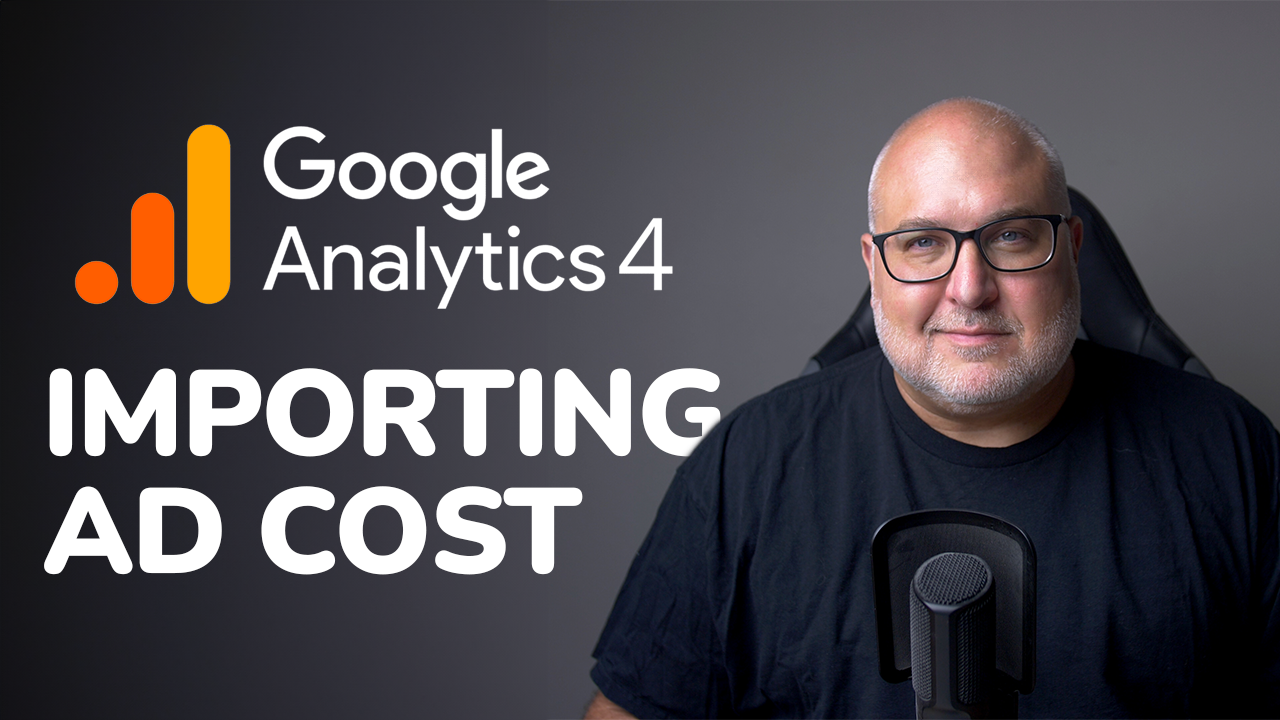Website Redesign Checklist
Roy Bielewicz
Don't Launch Your Redesign Without Checking These First!
If you launch your site without checking some critical issues, you can risk killing your SEO and creating a terrible experience for your customers. We take a look at what you need before you push the button on your website redesign.
Are you launching a new site or maybe launching a new redesign? Are you sure you've got all the stuff covered that you need to get covered to make sure everything goes flawlessly?
We're going to go through a checklist that we like to use with our clients that looks at all the things you should be checking before you go live.
One of the primary things, when you're going live with a new site is making sure all your I’s are dotted, tees crossed, and everything's tagged correctly. That means a lot of testing before you go live. Otherwise you can go live and just see your business starting to go down the drain because you forgot to do something really important.
We're going to go through a checklist of stuff that we like to go through with our clients before all of our website redesigns and before we launch those sites. Or if they're doing it themselves, coming in and picking up the pieces of stuff that they may not have done correctly.
TAGGING
One of the most important parts that we found is to make sure that all of your tagging is correct. People get so concerned with the design of the site and the content, and all of that's really important, how the site looks, but what they're not doing is making sure that they're measuring everything correctly once the site launches.
That means going through your Google analytics or analytics tool of choice; looking at all of your tags, looking at all your Google implementation, going through and making sure you've got the pixels, everything set up correctly. That all of your pages are tracking. Once you've got that, you've got your base page views, you've got that data, you've tested it, you know that you can see the data coming through, make sure that your conversions are tracking correctly.
I'm not just talking about retail conversions, although that's extremely important, obviously for retailers, but a lot of conversions on sites might be something that's based on, for instance a thank you page. When you're redesigning that site, the name of that thank you page or its location may have changed. If that's, for instance, a lead conversion on a site, if that's what you're basing that tracking on, and that page changes, you're going to lose that measurement.
Similarly in a retail site, you want to make sure that the entire checkout process is being tagged correctly. If you've moved from one type of commerce system, to say something like Shopify, the tags might not be set up correctly. You might not be looking at the entire checkout process. You want to look at, you know, add carts and removed from carts and whether products are coming through correctly that were purchased or coupon codes that were used.
That little minutiae of tracking that you may have set up on your old site, you want to go ahead and make sure that that's working on the new site as well. A lot of times, that's events, it's IDs. One of the things we see, is if you have button clicks as a conversion or something that you're tracking, if you've changed the CSS, if you've changed the design of your site, those button IDs and CSS names may have changed. You're going to have to go through and change a lot of those conversions.
301 REDIRECTS
This is probably one of the more important ones that we see all the time with site changes. If you are moving, particularly if you're moving from one platform to another, if you're changing categorization or navigation on your site, the URLs are going to change. You need to make sure that you have 301 redirect set up and that you've mapped all of your old URLs.
In our telling Google with those 301 redirects that this is the new URL you should look at and that's important for a couple of reasons. It's important for SEO, because if you launch a site and all of those pages are different, all of the SEO links that you've built, all of those organic results that you've built over the years are broken and they're going to go away.
Google's going to discover that eventually and it's going to start not ranking you for those pages. A 301 redirect essentially tells Google, “Hey, this address of this content has permanently changed and please give the new page the Google juice that the other one had.” That way you're theoretically not losing the value of that page; it's transferring.
The other important part of that is not just from a Google perspective, but from a user perspective. Have they clicked on a link and are coming now to an error page or to no page? We've had clients that didn't redirect and it throws up all sorts of different errors in the browser.
They're not seeing your brand. It looks bad for your brand and they're probably not going to visit again. Make sure that the process is set for you, before you switch the site, to go through the site and document all of your pages and all of your images.
We use tools like Screaming Frog, which will go through and index your site much like Google would. It gets literally every URL that you have. You can get every image name and that way, when you go through the mapping process, you can export it to Excel and make it a little bit easier to go through and make those changes.
404 PAGE
Just like with the URL redirects, an extremely important thing that you don't want to forget is a 404 page. Because inevitably you're going to forget to map certain pages or something happens that is going to throw an error. That page that used to exist is not going to exist anymore. It's important that you have a custom 404 page to let people know that, “Hey, our site's still here. Here's the rest of the navigation. You can still get to our content.” Not just throw them into a black hole of an error on Chrome or whatever browser they're using that just says page not. This way it's maintaining your brand. They see the new look, they see the navigation, they can, if they want get to other content. But if you don't set up that 404 page, they're just going to see an error page and that's not great for your brand.
Most content management systems will have this baked in and will allow you to customize it. You can actually add images and content that is fitting with your brand messaging and the tone and voice that you have for your brand.
Along with the, the URL changes that, that we talked about with 301 redirects and that type of thing, there's other things for SEO that you're going to want to make sure with that new site that you're checking before it goes live. Because again, you don't want to go live with the new site and then have all of your SEO effort go by the wayside or be wasted because you didn't bring it over to the new site.
Look for consistency in URLs. One of the things we see a lot of times is that as the navigation and platform changes, URLs will change. We've seen this with a number of clients that have had developers go in and develop a new category or strings in their URLs and not be consistent. In one they might have a capital and in another they may not; it might say catalog with a capital C and catalog with a C, products with a capital P products without a capital P. That matters because Google sees those as different pages.
Google has verified that they see URLs as case sensitive. They're not going to know which page is going to give to give credit to. If it's widespread, if you're doing that all throughout the site, they may very well use up a lot of their spider allotment. They're going to be wasting time trying to figure out which is the canonical page for your products or categories or catalog and not spending the time going through that really super important content that you want them to go through. By having those mixed cases in the URL, you can throw them off.
ALT & META DATA
One of the things that you've probably spent a lot of time on is image alt tags. You want to make sure that that also gets transferred over to your new site. It's not only important for SEO, but it's also important for usability to the site.
Make sure that all of those images that are on the new site also have image alt tags. The same goes for title tags. A lot of times we see where title tags, during the transfer process, might be duplicated because it was either something that was just filled or it's the new content management system or platform that is defaulting to a title tag. Well, that title tag is extremely important.
You want to make sure that those aren't missing, that they're optimized and that they're the right title tag for your products or pages. The same thing with meta descriptions; don't just assume that your new content management system or site is going to pick up the appropriate meta description.
You're going to want to go through and catalog those from your old site and make sure that they've transferred over to the new site. That way the meta descriptions aren't missing and that way you're one step ahead of the Google spider, making sure that that content is in front of them.
Last but not least, make sure that all of the internal links that you had in your previous site get transferred as well. If somebody's copying and pasting content from the old site into a new site or taking an export from the old site into the new site, make sure that those internal links, which are extremely important for SEO, are getting copied as well.
Keep in mind that those URLs may have changed as well, so you're going to want to look for any broken links as you're going through. You don't from any customer user experience, want broken links in that internal content because that they are going to a page that used to exist on the old site. Same thing for Google. You absolutely don't want Google seeing broken links in that content.
CONCLUSION
These are just a few of the things that you should be checking with either a new site that you're building, but also very important to check with a site that's on new platform or being redesigned, something that there's been a lot of hands in there and you're changing a lot of stuff because we've seen it. We've seen customers that forgotten to do some of these steps and their organic search traffic, just absolutely plummets or people aren't checking out correctly, or they're not measuring that checkout correctly. Now they have a gap in their data where they're not showing any revenue data, or any conversion data. Even just a couple days of that can really throw off your reporting and understanding how your marketing programs are working.
Contact Us





